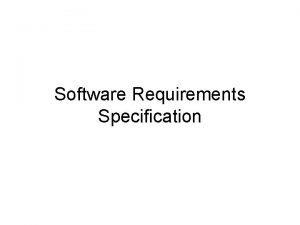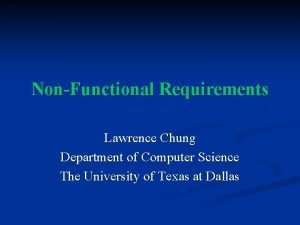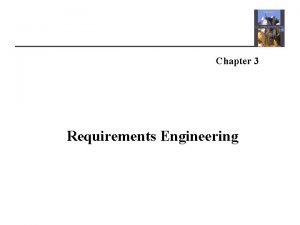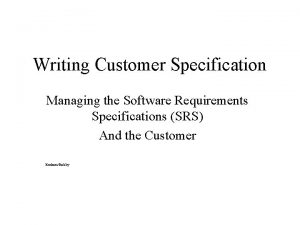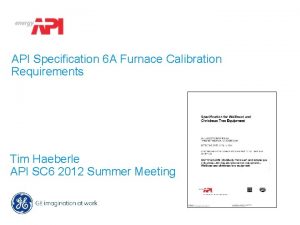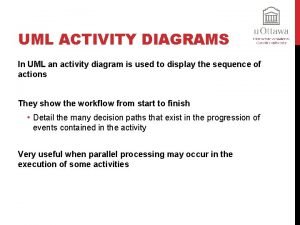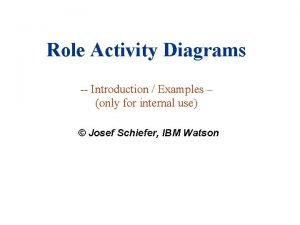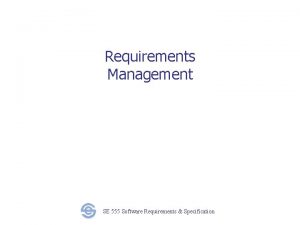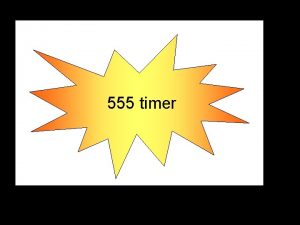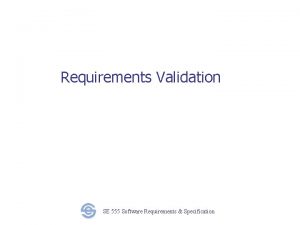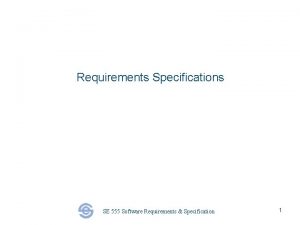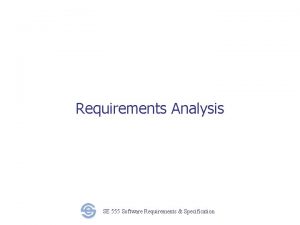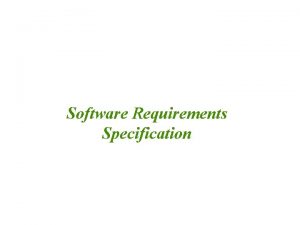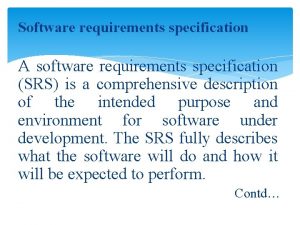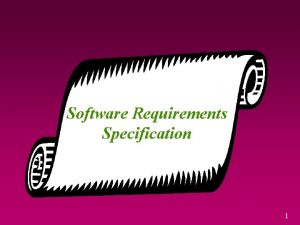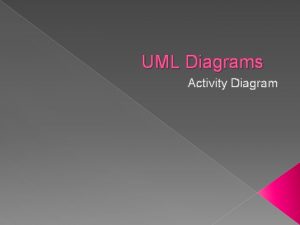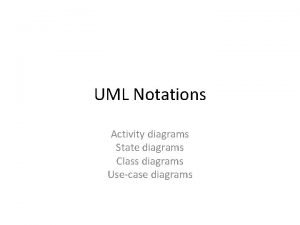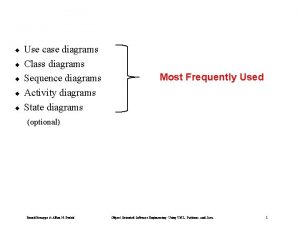Activity Diagrams SE 555 Software Requirements Specification 1













- Slides: 13

Activity Diagrams SE 555 Software Requirements & Specification 1

Activity Diagram • Activity diagrams describe the workflow behavior of a system. – Activity diagrams are used in process modeling and analysis of during requirements engineering. – A typical business process which synchronizes several external incoming events can be represented by activity diagrams. • They are most useful for understanding work flow analysis of synchronous behaviors across a process. SE 555 Software Requirements & Specification 2

Activity Diagram • Activity diagrams are used for – documenting existing process – analyzing new Process Concepts – finding reengineering opportunities. • The diagrams describe the state of activities by showing the sequence of activities performed. – they can show activities that are conditional or parallel. SE 555 Software Requirements & Specification 3

Activity Diagram Concepts • An activity is trigged by one or more events and activity may result in one or more events that may trigger other activity or processes. • Events start from start symbol and end with finish marker having activities in between connected by events. • The activity diagram represents the decisions, iterations and parallel/random behavior of the processing. – They capture actions performed. – They stress on work performed in operations (methods). SE 555 Software Requirements & Specification 4

When to Use Activity Diagrams • The main reason to use activity diagrams is to model the workflow behind the system being designed. • Activity Diagrams are also useful for: – analyzing a use case by describing what actions need to take place and when they should occur – describing a complicated sequential algorithm – modeling applications with parallel processes • Activity Diagrams should not take the place of interaction diagrams and state diagrams. • Activity diagrams do not give detail about how objects behave or how objects collaborate. SE 555 Software Requirements & Specification 5

Components • An activity is an ongoing, though interruptible, execution of a step in a workflow (such as an operation or transaction) – Represented with a rounded rectangle. – Text in the activity box should represent an activity (verb phrase in present tense). SE 555 Software Requirements & Specification 6

Components • An event is triggered by an activity. It specifies a significant occurrence that has a location in time and space. – An instance of an event (trigger) results in the flow from one activity to another. – These are represented by directed straight lines emerging from triggering activity and ending at activity to be triggered. Label text for events should represent event but not the data involved. • A decision may be shown by labeling multiple output transitions of an activity with different guard conditions. – For convenience a stereotype is provided for a decision: the traditional diamond shape, with one or more incoming arrows and with two or more outgoing arrows, each labeled by a distinct guard condition with no event trigger. SE 555 Software Requirements & Specification 7

How to Draw an Activity Diagram • Diagrams are read from top to bottom and have branches and forks to describe conditions and parallel activities. – A fork is used when multiple activities are occurring at the same time. – A branch describes what activities will take place based on a set of conditions. – All branches at some point are followed by a merge to indicate the end of the conditional behavior started by that branch. – After the merge all of the parallel activities must be combined by a join before transitioning into the final activity state. SE 555 Software Requirements & Specification 8

Activity Diagram Example Fork Start State Activity Branch Join Merge End State SE 555 Software Requirements & Specification 9

Use Case • Withdraw money from a bank account through an ATM SE 555 Software Requirements & Specification 10

SE 555 Software Requirements & Specification 11

Disadvantages • A disadvantage of activity diagrams is that they do not explicitly present which objects execute which activities, and the way that the messaging works between them. – Labeling of each activity with the responsible object can be done. – It is useful to draw an activity diagram early in the modeling of a process, to help understand the overall process. • Then interaction diagrams can be used to help you allocate activities to classes. SE 555 Software Requirements & Specification 12

References • Activity Diagrams • http: //pigseye. kennesaw. edu/~dbraun/csis 4650/A&D/UML_tutorial/acti vity. htm • http: //isds. bus. lsu. edu/cvoc/learn/bpr/cprojects/spring 1998/modeling/a ctivity. html • http: //www-106. ibm. com/developerworks/rational/library/2802. html • Fast Track UML 2 (from Books 24 x 7) SE 555 Software Requirements & Specification 13
 Rake symbol in activity diagram
Rake symbol in activity diagram Requirement vs specification
Requirement vs specification Upper specification limit and lower specification limit
Upper specification limit and lower specification limit Upper specification limit and lower specification limit
Upper specification limit and lower specification limit The interaction diagrams, use case diagrams are called as
The interaction diagrams, use case diagrams are called as Lawrence chung
Lawrence chung System requirements specification
System requirements specification Customer specification
Customer specification Volere process
Volere process Api requirements specification
Api requirements specification Ambulance dispatch system requirements specification
Ambulance dispatch system requirements specification Aoa and aon
Aoa and aon Uml 2 activity diagram
Uml 2 activity diagram Role activity diagram example
Role activity diagram example

